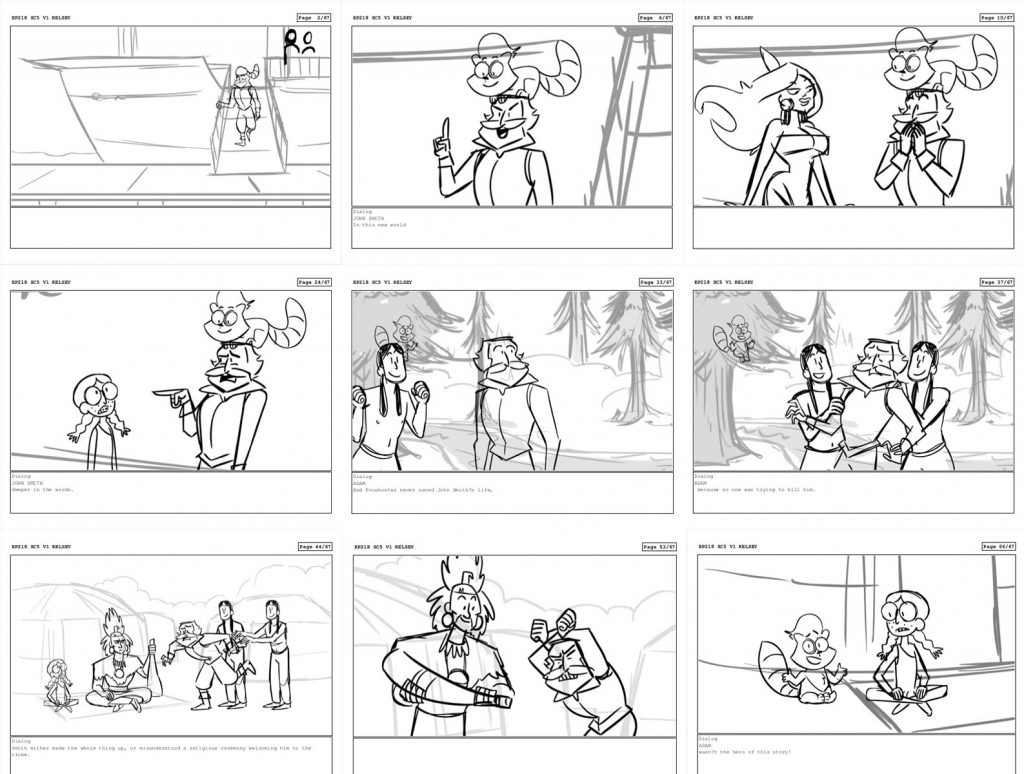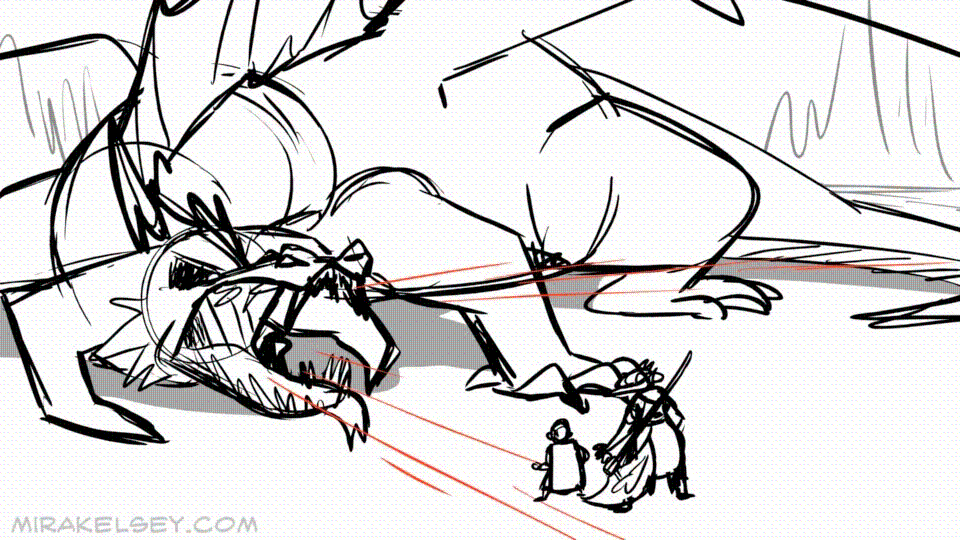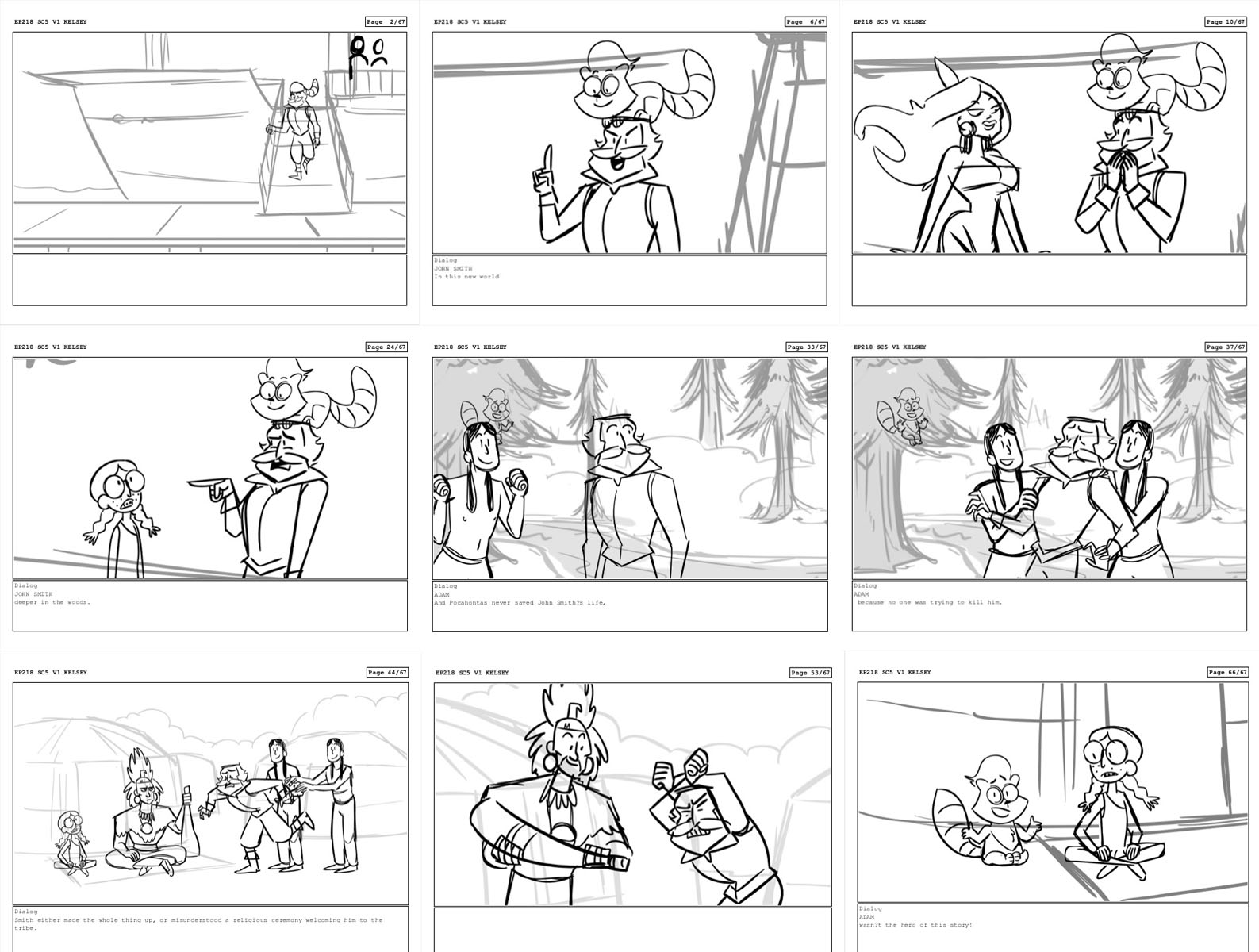ANIM Almuni Interviews: Kelsey Norden
Kelsey Norden graduated from SCAD in 2013, with a B.F.A. in Animation. She is a successful storyboard artist who has worked for Disney, Titmouse, Inc and Cartoon Network. Kelsey has also had a successful storyboard career doing freelance work for Nickelodeon and Mattel Creations. Currently, Kelsey works as a story artist for Oddball, Inc. To see more of her work, check out Kelsey’s portfolio at http://mirakelsey.blogspot.com/
Where are you from?
I’m from Dallas, Texas. I currently live in Los Angeles, California.
How did you find out about SCAD, and why did you decide to go?
I don’t remember what precisely put SCAD on my radar. I think my mother and I were looking for college-run summer programs for high school students that I could attend between my junior and senior years, and we stumbled onto SCAD Summer Seminars. I had a good time attending that and was determined to get out of state to study animation. What sold me was mostly the campus, I loved how non-traditional it was and I still think downtown Savannah is beautiful.
When did you graduate, and what was your experience like in your first few months after graduation?
I graduated Spring 2013 and immediately moved back in with my parents. I sent out job applications everywhere and managed to get some freelance work after three months of searching. I was hoping to get a solid job offer before moving out to LA, but I wasn’t going to get anyone’s attention from Dallas, so the day after Christmas I packed up a car and drove out to live with my uncle while I did some more proactive job hunting. My first studio job came after about three months, when I was checking out an apartment and one of the tenants offered to hand my resume over to his supervisor. You never know where your break is going to come from!
Is there anything you wish you took advantage of/did at SCAD that you think others should?
I wish I’d took advantage of my professor’s office hours more often to get extra critique on my assignments. And I mean deep, thorough critiques that rip apart my work down to every excruciating detail so that I have to rebuild it from the bottom up for the best possible product. As a student, you’re paying a lot of money for each class on your schedule, might as well make sure you’re learning as much as you possibly can.
How did SCAD contribute to your success?
The main thing I remember is working with my friends in the labs at Montgomery Hall. Even though I had the means to work from home if I wanted, it was nice to have a support system around.
Where are you currently working?
I work at Oddbot Studios on the Disney Junior show “Muppet Babies.”
What do you think has allowed you to succeed?
My speed. I’ve always been a fast worker, I was the only one in my circle in school that didn’t have to pull all-nighters to get work done. I’ve smoothed out my workflow to cut as many corners as possible without sacrificing quality. In storyboards, pretty drawings get you noticed but don’t hit the deadline for you. Prioritize getting your work done quickly over making it look perfect.
“In storyboards, pretty drawings get you noticed but don’t hit the deadline for you. Prioritize getting your work done quickly over making it look perfect.“
How has your career changed/progressed?
I started out working on adult comedy shows, and over the last year I’ve transitioned to children’s and preschool entertainment. The younger the audience gets, the more prevalent the notes from Standards & Practices are, but we know how to anticipate them at every level. This show is also the first I’ve been on where I board 11-minute episodes completely on my own, which is a challenging responsibility. Previously I was always on a team that would split up scenes.
Has the industry surprised you at all? How and why?
One of the biggest surprises I’ve found is the difference between working for a showrunner with a writing background versus someone with an artistic background. Writers tend to give notes that are referential to other movies or shows they’re drawing inspiration from, and also make the biggest and most time-consuming changes. Their direction is very clear from the outset so that you can match up with their vision quickly. Artists are more likely to take what you’ve done and simplify it, or build off what you’ve already finished. They also give more leniency for you to add your own spin on the material. I’ve learned a lot from both types of shows.

Could you describe some challenges or obstacles that workers in your industry currently face? How have you dealt with them?
I can write essays on my opinions about the state of the industry, so I’ll stick with one topic that’s important for post-grads: be wary of abusive art tests. When a studio wants to hire you, they first make you complete an art test to see if you’re a good fit to the show. Reasonably this should take about four hours to complete at most, which equates to roughly 50 panels of storyboards. I once got a test for a show that sent me three pages of script for an action-heavy scene, which would have taken a week minimum to finish if I weren’t already employed, but I had a full-time job and no time to spare for that much work. I requested that they offer me freelance instead so that I could change my schedule to make it happen, but was outright denied. That studio didn’t value my time and probably wouldn’t have seriously considered me for the position anyway, so I had to turn down the test. When you’re offered an art test, you need to ask a few questions to make sure it’s worth it. Is this too much work to do for free? Do I feel like I have a real shot at this position, or are they just going to hire internally? Have they responded to my portfolio, and would they consider giving me a small freelance assignment instead? The Animation Guild is working on policing these abusive testing practices, so if you’re applying to a Los Angeles studio and get an art test, you can email them with questions.
“Be wary of abusive art tests.”
What are key differences in freelancing vs. working within a single company?
Pay and schedule. Freelancers make less than in-house artists and don’t get any benefits like health care or pension through their employer(s), but can work whatever hours they want. I find my most productive hours to be mid-to-late afternoon, so working freelance let me make the most of that time without feeling guilty burning through the morning “pretending” to work. That said, a lot of studios are pretty lenient with the hours you work day-to-day when you’re in-house, as long as you hit your deadlines.
What do you keep in mind/think others should keep in mind when storyboarding?
When building your portfolio, focus on gags you can set up easily and give a strong punchline to. If you have to do too much set up to sell a concept, recruiters are going to get bored and move on. You have to sell yourself just as much on your storytelling ability as you do on your draftsmanship and cinematography. Samples for action and emotional scenes are also great additions, but studios love to see your jokes.
Are there any specific elements that make boards stand out?
Clarity and expression. Boards are the blueprint for the show, so it is important to make sure the intention behind them is clear so the animators and designers don’t have to come by asking questions. Make sure the action demonstrated is easy to read, the right emotion is present in your character’s expression, and the framing puts emphasis in the right place to tell your story the way you want it. The more you say without dialogue will make your storyboard stronger, because visuals are universal.
Any advice for students when it comes to their educational career or their career in the industry?
Always have a pitch, personal project, or other goal in your back pocket. You might get a chance to discuss it with someone else in the industry when you don’t expect it and turn it into a new opportunity, Plus, it’s nice to have your own thing to turn to when you need a break from the work grind or you’re between gigs.

